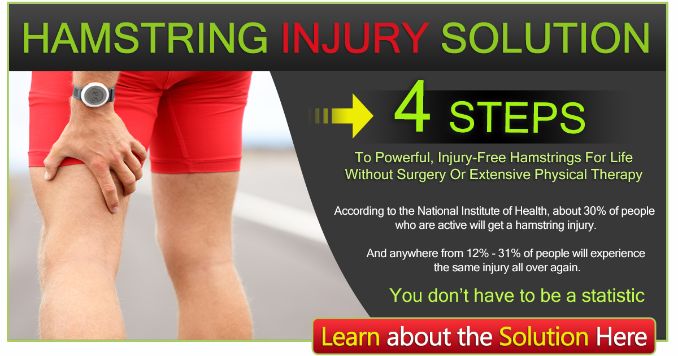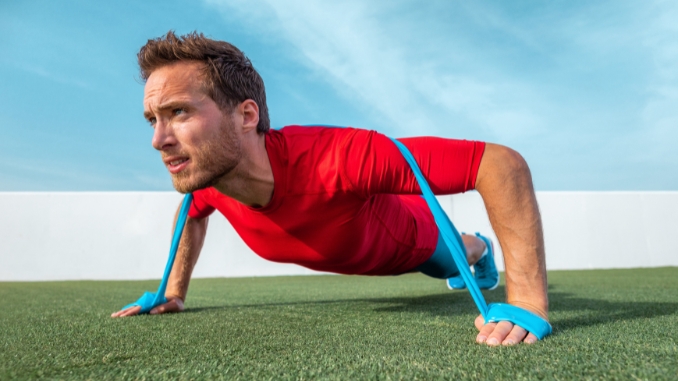Looking to recover swiftly from a hamstring injury and treatment? Look no further! This article introduces a series of exercises crafted to accelerate your healing process.
Whether you're an athlete, fitness enthusiast, or simply eager to resume pain-free daily activities, these exercises are tailored for you.
Hamstring injuries and treatment can be frustrating, but with the right approach, you can quickly regain strength and mobility.
This guide prioritizes your well-being, offering carefully selected exercises ranging from gentle stretches to targeted strengthening movements.
Let's embark on this transformative journey together and reclaim control over your health and mobility!
What is a Hamstring Injury?

A hamstring injury is the strain or tear of one or more muscles at the back of the thigh. These muscles are responsible for bending your knee and extending your hip. They are crucial in various activities, including running, jumping, and kicking.
Hamstring injuries commonly occur during activities that involve sudden bursts of speed or rapid changes in direction. Sports such as soccer, basketball, and sprinting are particularly prone to causing hamstring injuries. However, hamstring injuries can occur during everyday activities, such as slipping or falling.
Common Causes of Hamstring Injuries

Understanding the causes of hamstring injuries is crucial for prevention. Several factors contribute to hamstring injury treatment.
By comprehending these causes, you can implement preventative measures and lower your risk of a hamstring injury recovery. Whether you're an athlete, fitness enthusiast, or someone seeking pain-free daily activities, this knowledge empowers you.
Hamstring injury treatment aims to address these contributing factors, facilitating a swift recovery. From targeted exercises to proactive lifestyle adjustments, embracing a holistic approach enhances your chances of success.
1. Muscle Imbalances
Muscle imbalances [²] occur when certain muscles are stronger or tighter than others. In the case of hamstring injuries, weak or tight hamstring muscles paired with strong quadriceps can increase the chances of hamstring strains.
2. Lack of Warm-up
Failing to properly warm-up before engaging in physical activity can put excessive stress on your muscles, making them more susceptible to injury. A warm-up routine should include dynamic stretches and light aerobic exercises to increase blood flow and prepare your muscles for the activity.
3. Overuse
Repeatedly performing the same movement or activity without allowing sufficient rest and recovery time can lead to overuse injuries. Overuse of the hamstring muscles can cause strain, especially when the muscles are fatigued.
4. Poor Technique
Incorrect form or technique during physical activities can place unnecessary stress on your muscles and increase the risk of injury. Learning and practicing proper form is important to minimize the hamstring strain.
Types of Hamstring Injuries
Hamstring injuries can vary in severity, ranging from mild strains to complete muscle tears. The severity of the injury will dictate the treatment approach and recovery time.
Here are the three main types of hamstring injuries:
1. Grade 1 - mild muscle pull or strain [¹]
A grade 1 strain is mild, involving a few muscle fibers being stretched or torn. This type of injury usually results in minimal pain and does not significantly affect one's ability to perform daily activities.
2. Grade 2 - partial muscle tear
A grade 2 is partial, where many muscle fibers are torn. This type of injury typically causes moderate pain and weakness and affects your ability to perform certain activities.
3. Grade 3 - complete muscle tear
A grade 3 strain is a complete or severe hamstring muscle tear. This type of injury is accompanied by intense pain and significant weakness and may require surgical intervention for complete recovery.
Symptoms of a Hamstring Injury

Identifying the symptoms of a hamstring injury can help you seek appropriate treatment and avoid further damage.
Here are some common symptoms associated with hamstring injuries:
1. Pain
Hamstring injuries often result in pain at the back of the thigh, typically felt during physical activity or when stretching the affected muscles.
2. Swelling
Swelling may occur around the injured leg due to inflammation and fluid accumulation.
3. Bruising
In more severe cases, bruising may develop around the injured area due to bleeding within the muscle tissues.
4. Weakness
A hamstring injury can cause weakness in the affected leg, making it difficult to perform activities that require hamstring muscles.
You may experience a limited range of motion in your hip and knee joints due to the injury.
If you suspect a hamstring injury, it is important to consult a healthcare professional for an accurate diagnosis and appropriate treatment plan.
The Importance of Early Treatment and Rehabilitation
Early treatment and rehabilitation play a crucial role in the recovery process of a hamstring injury. Starting rehabilitation exercises as soon as possible can help minimize pain, reduce swelling, and prevent further muscle imbalances or compensatory movements.
Additionally, early intervention can aid in restoring normal muscle function and preventing long-term complications.
It is important to consult with a qualified sports therapist or healthcare professional to ensure you are following the appropriate rehabilitation program for your specific injury.
Hamstring Injury Exercises for Recovery
Recovering from a hamstring injury requires a combination of stretching and strengthening exercises. If you're wondering, "what exercise can you do with hamstring injury," let's delve into some effective strategies that can be performed comfortably as hamstring injury exercises at home to fast-track your healing hamstring rehabilitation process.
Hamstring Stretching Exercises
1. Standing Hamstring Stretch
- Begin in an upright standing position with your feet hip-width apart and arms on your sides, maintaining good alignment with your head, shoulders, hips, and legs.
- Engage your core and step your left foot forward, pointing your toes toward the ceiling.
- Hinge through your hips as you reach your toes with both hands.
- Hold this position for several deep belly breaths through your nose and mouth.
- Relax and return to the starting position. Repeat the movement on the opposite side.
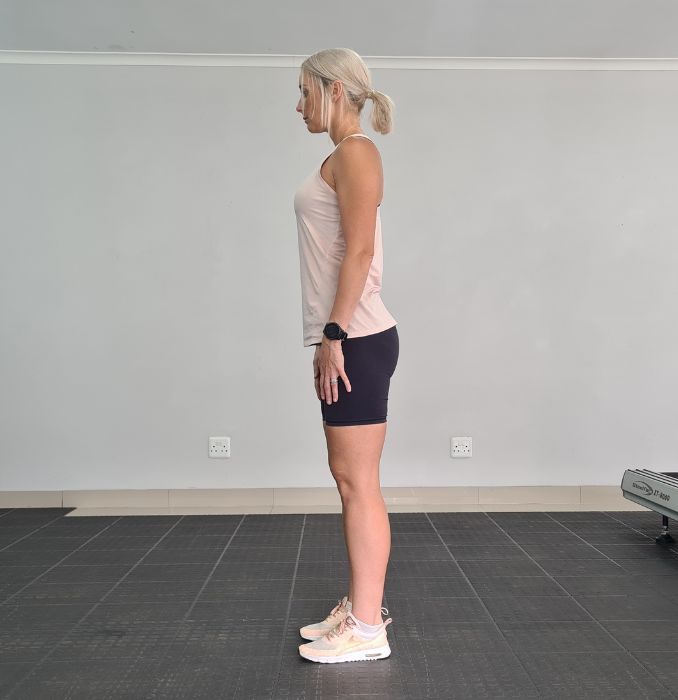
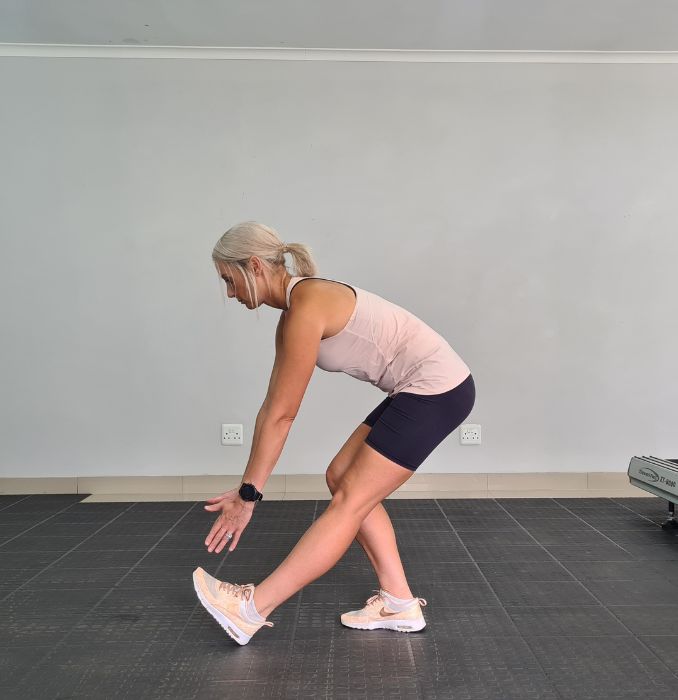
2. Lying Hamstring Stretch
- For this hamstring injury exercises, lie on your back on the floor, maintaining good alignment with your head, shoulders, hips, and legs.
- Engage your core and raise the affected leg straight towards the ceiling, using your hands as support if needed.
- Hold the position for several deep belly breaths, in through your nose and out through your mouth.
- Relax and return to the starting position.
- Repeat the movement on the opposite side.
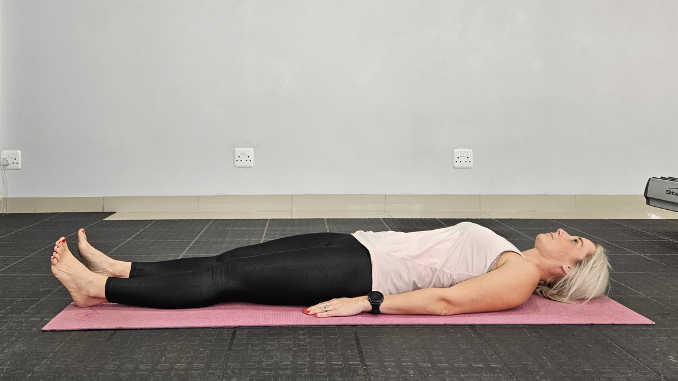
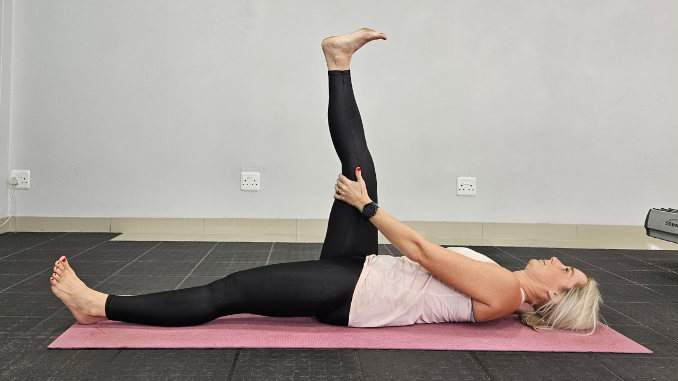
Hamstring Strengthening Exercises
1. Standing Hamstring Curl
- Lie on your back on the floor, maintaining good alignment with your head, shoulders, hips, and legs.
- Engage your core and raise the affected leg straight towards the ceiling, using your hands as support if needed.
- Hold the position for several deep belly breaths, in through your nose and out through your mouth.
- Relax and return to the starting position. Repeat the movement on the opposite side.
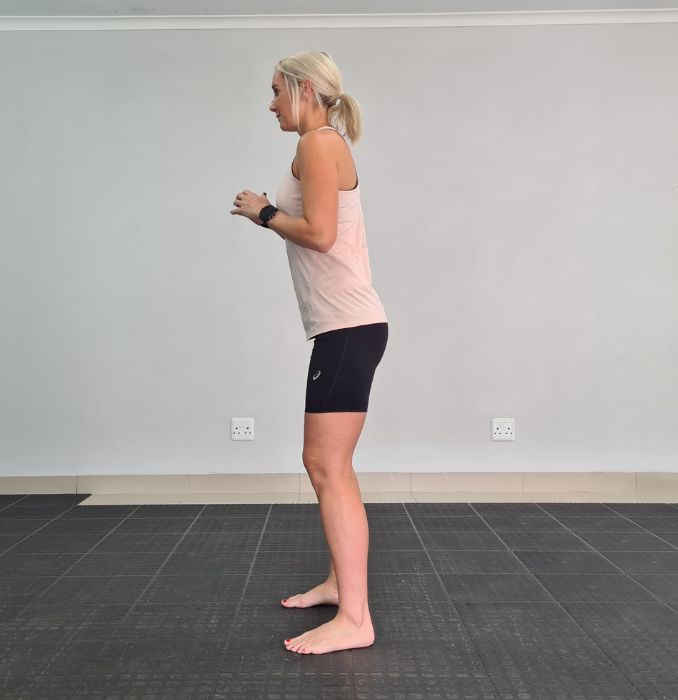

2. Single-Leg Bridge
- Lie on your back with your knees bent and your feet flat on the floor.
- Maintain good alignment with your head, shoulders, and hips, relaxing your upper body.
- Bring your arms to your sides.
- Straighten your right leg forward, keeping it elevated off the floor.
- Contract your abdominal area, then push from your left heel to lift your hips.
- Hold this position for several deep belly breaths, in through your nose and out through your mouth.
- Relax and return to the starting position.
- Repeat the movement on the opposite side.
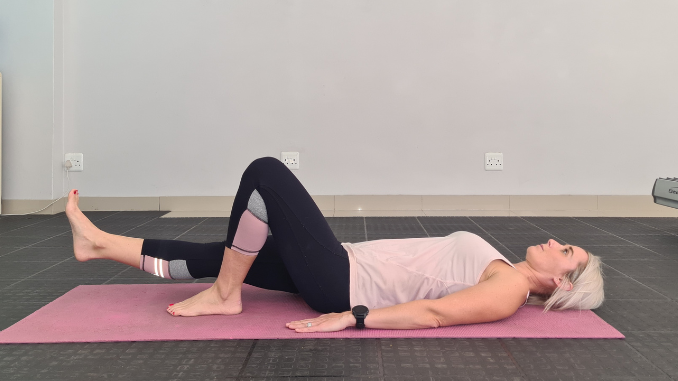
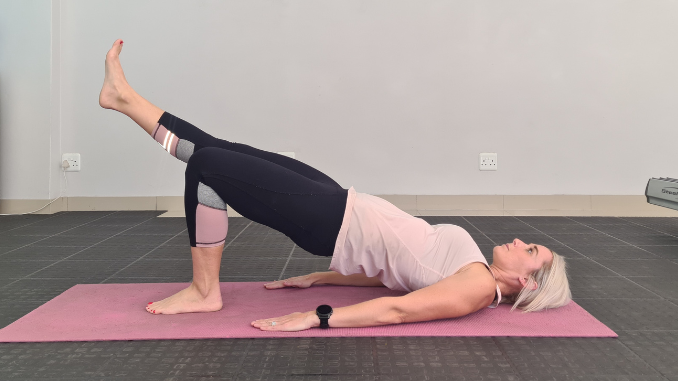
3. Romanian Deadlift
- For this hamstring injury exercises, begin in an upright standing position with your feet wider than hip-width apart, with the kettlebell placed on the floor between your feet.
- Hinge through your hips and soften your knees to reach down and grab the kettlebell with both hands, keeping your back straight and your chest up, feeling a stretch in your hamstrings.
- Engage your core.
- Push through your heels to lift the kettlebell off the floor, keeping it close to your quads.
- Relax and return to the starting position. Repeat the movement.
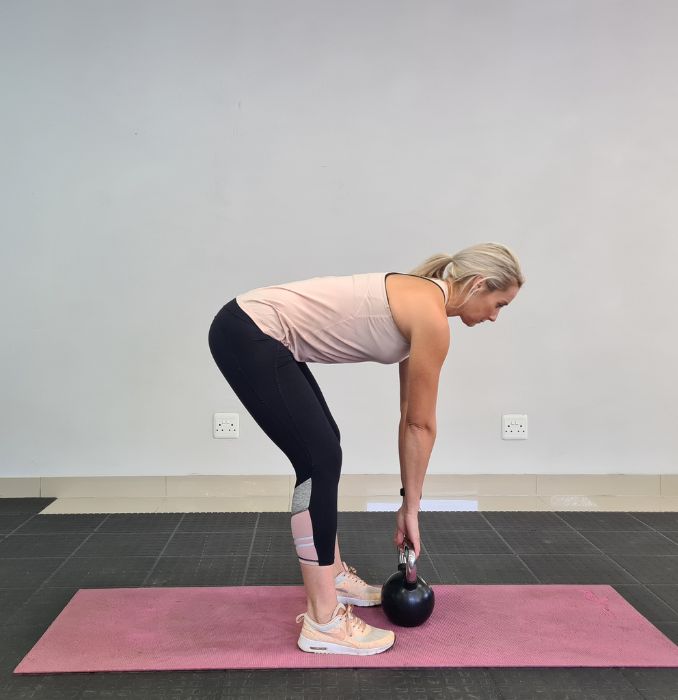
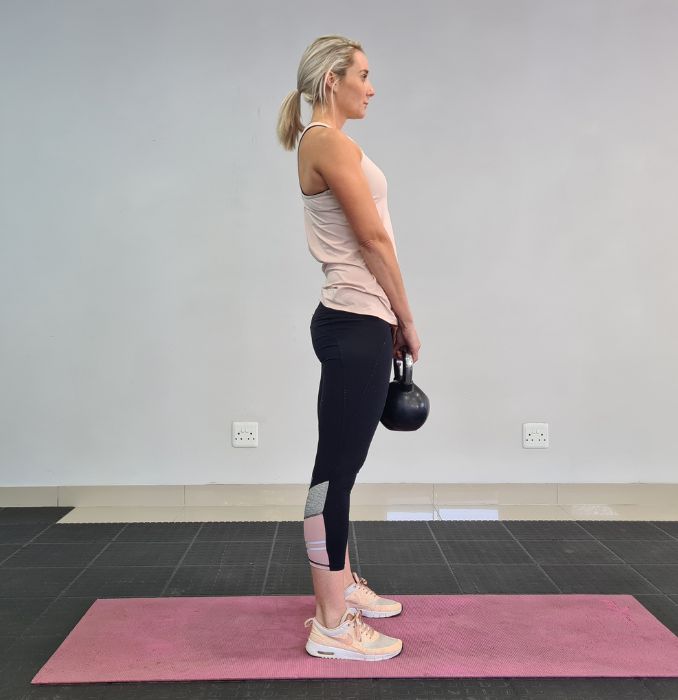
4. Runner's Stretch
- Begin in an upright standing position with your feet wider than hip-width apart in front of a wall, maintaining good alignment with your head, shoulders, hips, and legs.
- Place your hands on the wall at shoulder height and engage your core.
- Step one foot back, keeping that leg straight and your heel firmly on the ground.
- Soften your front knee slightly while keeping your back leg straight.
- Lean into the wall until you sense the stretch in the calf of your back leg, keeping your back heel on the ground.
- Hold this position for 15-30 seconds.
- Relax and return to the starting position.
- Repeat the movement on the other leg.
- Complete for 1-2 sets of 2 repetitions on each side.
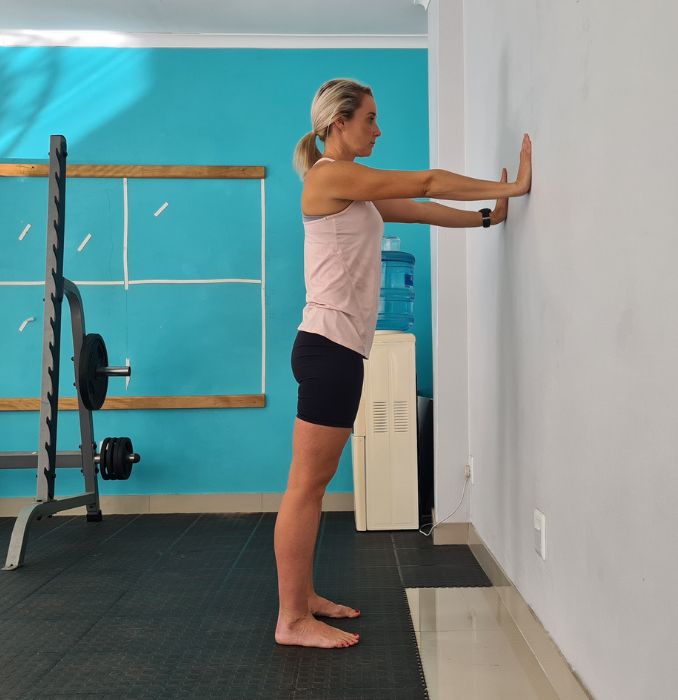
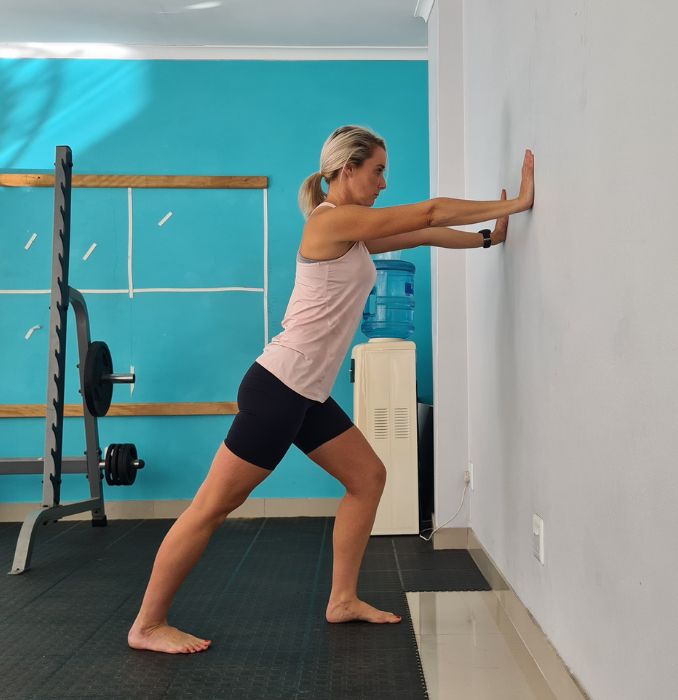
Hamstring Injury Prevention Tips
Preventing hamstring injuries is essential for maintaining an active and healthy lifestyle.
Here are some tips to help reduce your risk of a hamstring injury:
- Warm-up: Always warm-up before engaging in physical activity. Perform dynamic stretches and light aerobic exercises to increase muscle blood flow.
- Gradual Progression: Gradually increase the intensity and duration of your exercise or activities. Avoid abrupt increases in training volume or intensity, as this can strain your muscles excessively.
- Proper Technique: Learn and practice proper form and technique for activities that involve using your hamstring muscles. This will help minimize the risk of injury and maximize the effectiveness of your movements.
- Balanced Strength Training: Incorporate exercises that target your hamstring and quadriceps muscles to maintain muscle balance and reduce the risk of strain.
- Adequate Rest and Recovery: Allow your body enough time to recover between workouts or intense physical activities. This will help prevent overuse injuries and give your muscles time to repair and rebuild.
Conclusion
Hamstring injuries can be debilitating, but with the right exercises and a proactive approach to rehabilitation, you can fast-track your healing process.
Always consult a healthcare professional or sports therapist for an accurate diagnosis and personalized treatment plan.
By incorporating stretching exercises to improve flexibility and strengthening exercises to build muscle strength, you'll be well on your way to recovery in no time. Don't let a hamstring injury hold you back - take control of your healing journey today!
Ready to speed up your hamstring injury recovery? Explore our targeted exercises and consult a professional to fast-track your healing journey. Start today, reclaim your active lifestyle, and check out our Hamstring Injury Solution for a comprehensive guide!


